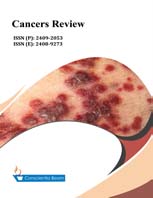The Risk of Ovarian Cancer in Women Fed with Milk Obtained from Goats Having Different Birth Type and Kid Sex
DOI:
https://doi.org/10.18488/journal.95.2016.32.10.13Abstract
The aim of this research is to investigate the effect of kid sex and birth type of goat on milk content (fat, lactose and pH) and ovarian cancer risk in women. With an object of specifying the difference among milk parameters (lactose, fat and pH) with respect to birth type (20 single and 20 twin) and sex of birth (20 male and 20 female) in dams, 80 native (kil) Goats based on birth type and sex were divided in to four groups (single, twin, female, male). Milks obtained from dams giving birth to twins and single kid showed significant differences in terms of lactose rates. Lactose level (5.12%) of the dams giving birth to one offspring was found higher than that of goats (4.70%) have twin kids. Also, birth type in dams had a significant influence on milk fat rates. The fat rate of milk (3.74%) obtained from single group was found higher than milk fat rate (3.45%) of twin group. There was no difference between single and twin group for milk acidity (pH). There are no differences between different sexes (male and female) of birth with respect to all milk parameters. According to findings obtained from this study, preferring the milks of the dams giving birth to twins can be relatively advantageous for the ovarian cancer risk. It is known that the contents of milk are proving to be a major risk factor in the development of ovarian cancer. However, exposure to risk factors such as high milk fat and lactose levels in milk from goats giving birth to single kid doesn’t means that ovarian cancer will necessarily occur.

